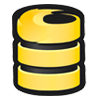Outline
Now that our Users can authenticate and have profiles, we can finally start to create the functionality for Channels. We're going to start by creating the left sidebar for listing channels and display the current user's profile.
Channels in app/channels/channels.service.js that will
return a $firebaseArray at the channels node.
angular.module('angularfireSlackApp')
.factory('Channels', function($firebaseArray){
var ref = firebase.database().ref('channels');
var channels = $firebaseArray(ref);
return channels;
});
channels with the following code:
.state('channels', {
url: '/channels',
resolve: {
channels: function (Channels){
return Channels.$loaded();
},
profile: function ($state, Auth, Users){
return Auth.$requireSignIn().then(function(auth){
return Users.getProfile(auth.uid).$loaded().then(function (profile){
if(profile.displayName){
return profile;
} else {
$state.go('profile');
}
});
}, function(error){
$state.go('home');
});
}
}
})
templateUrl and controller are temporarily omitted since we haven't created
them yet. We're resolving two dependencies here: channels, which is promising
our $firebaseArray of channels, and profile, which is a lot like the
profile dependency in the profile state, but we're ensuring that the user
already a displayName set, otherwise they're taken to the profile state, and
if they're not authenticated, they get sent to the home state.
ChannelsCtrl in app/channels/channels.controller.js, injecting
$state, Auth, profile, and channels.
angular.module('angularfireSlackApp')
.controller('ChannelsCtrl', function($state, Auth, Users, profile, channels){
var channelsCtrl = this;
});
channels and profile to the resolved dependencies from the router
channelsCtrl.profile = profile;
channelsCtrl.channels = channels;
getDisplayName and getGravatar to the respective functions on the
Users service.
channelsCtrl.getDisplayName = Users.getDisplayName;
channelsCtrl.getGravatar = Users.getGravatar;
logout function that will allow our users to log out, returning them
to the home state.
channelsCtrl.logout = function(){
Auth.$signOut().then(function(){
$state.go('home');
});
};
app/index.html, include the channels service and controller
<script src="users/profile.controller.js"></script>
<script src="channels/channels.controller.js"></script>
<script src="channels/channels.service.js"></script>
app/channels/index.html with
the following code:
<div class="main">
<div class="sidebar">
<div class="slack-name">
<h2>FireSlack</h2>
</div>
<div class="channel-list">
<div class="list-head">Channels</div>
</div>
<div class="my-info">
<img class="user-pic" ng-src="{{ channelsCtrl.getGravatar(channelsCtrl.profile.$id) }}" />
<div class="user-info">
<div class="user-name">
{{ channelsCtrl.profile.displayName }}
</div>
<div class="options">
<a ui-sref="profile">edit profile</a>
/
<a href="#" ng-click="channelsCtrl.logout()">logout</a>
</div>
</div>
</div>
</div>
</div>
controller and templateUrl in channels state to the following:
url: '/channels',
controller: 'ChannelsCtrl as channelsCtrl',
templateUrl: 'channels/index.html',
resolve to the home state:
resolve: {
requireNoAuth: function($state, Auth){
return Auth.$requireSignIn().then(function(auth){
$state.go('channels');
}, function(error){
return;
});
}
}
updateProfile function in ProfileCtrl to send the user to the
channels state after a successful save.
profileCtrl.updateProfile = function(){
profileCtrl.profile.emailHash = md5.createHash(auth.email);
profileCtrl.profile.$save().then(function(){
$state.go('channels');
});
};
This requireNoAuth dependency is a lot like the one on login and register
but it sends the user to the channels state. If you want, you can change the
requireNoAuth dependency on login and register to also send the user to
the channels state as well. Now when we're logged in and visit
http://localhost:4000 we should be sent to the channels state. In that
state, we can see the sidebar we just created for our application. There should
be the logged in user's name and Gravatar at the bottom of the sidebar, and an
edit profile and logout link next to it. We're using the ui-sref directive
that comes with ui-router to specify what state we should navigate to on
click. If we click on edit profile, we can update the user's displayName and
it should send us back to the channels state when we submit the form. The
logout link should log us out and send us back to the home state. Now let's
create the view to create channels.
channels.create:
.state('channels.create', {
url: '/create',
templateUrl: 'channels/create.html',
controller: 'ChannelsCtrl as channelsCtrl'
})
This state is a child state of the channels controller (the dot notation in
the state name specifies parentState.childState). This state will also use
ChannelsCtrl. We'll want to render our child states to the right of the
sidebar. We need to declare another ui-view tag in order for our child
states to appear. You can read more about ui-router's nested states at this
Github Wiki.
message-pane div with a ui-view tag in app/channels/index.html.
This should be at the end of the main div after the sidebar div.
<div class="message-pane">
<ui-view></ui-view>
</div>
newChannel object on ChannelsCtrl with a blank name
channelsCtrl.newChannel = {
name: ''
};
createChannel function on ChannelsCtrl.
channelsCtrl.createChannel = function(){
channelsCtrl.channels.$add(channelsCtrl.newChannel).then(function(){
channelsCtrl.newChannel = {
name: ''
};
});
};
The $add function on the channels $firebaseArray provides similar
functionality to the .push() function on a Javascript Array, but keeps our
data in sync with Firebase, while returning a promise. Once the new channel is
created we'll need to clear out the newChannel object.
app/channels/create.html for creating a new channel
<div class="header">
<h1>Create a channel</h1>
</div>
<form ng-submit="channelsCtrl.createChannel()">
<div class="input-group">
<input type="text" class="form-control" placeholder="Channel Name" ng-model="channelsCtrl.newChannel.name">
</div>
<input type="submit" class="btn btn-default" value="Create Channel">
</form>
app/channels/index.html using the following
markup in the channel-list div below the list-head div:
<div class="channel-list">
<div class="list-head">Channels</div>
<div class="channel" ng-repeat="channel in channelsCtrl.channels">
<a># {{ channel.name }}</a>
</div>
</div>
We're using the ng-repeat directive to iterate over our array of channels.
channels.create state below the channel listing:
<div class="channel-list">
<div class="list-head">Channels</div>
<div class="channel" ng-repeat="channel in channelsCtrl.channels">
<a># {{ channel.name }}</a>
</div>
<div class="channel create">
<a ui-sref="channels.create">+ create channel</a>
</div>
</div>
We're now able to click on the create channel link and start creating channels!
Check your work
You can view the completed & working code for this tutorial here:

